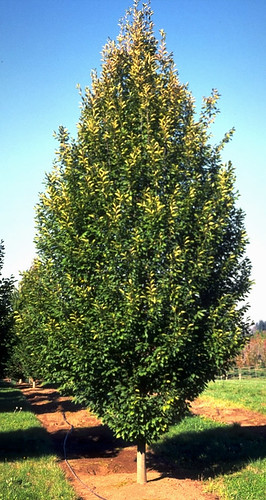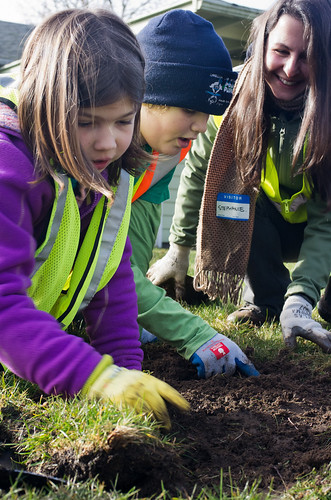Climate Trees: Trees for the 21st Century – Part 2
This is a continuation of “Climate Trees: Trees for the 21st Century.” You can read Part 1 here.

FOT’s Lane County chapter developed a provisional three-tier list of trees that are likely to be resilient to climate change and tolerate heat and drought well to help prioritize planting efforts.
Tier 1 trees are top priority to plant. They are heat and drought tolerant trees that we can plant now, trees already on local approved street tree lists. Of the more than 100 trees on local approved lists, we found 16 trees that we feel are climate resilient, but only four that we can source and receive easy approval to plant locally. These are Oregon white oak, silver linden, red horsechestnut, and European hornbeam. FOT has made major strides at increasing planting of Oregon white oaks on Eugene streets.
Other Tier 1 trees are conifers that local municipalities restrict completely or limit planting to rare 20 foot planting strips, such as Atlas cedar, incense cedar, giant sequoia, deodar cedar, valley ponderosa, and Douglas-fir. Several additional Tier 1 trees are difficult or impossible to source currently, such as sawtooth oak, Hungarian oak, Shumards oak, and burr oak.

Tier 2 trees are trees that are used as street trees in urban areas in the western US with success are likely to thrive here, but are not on current local approved street tree lists. These include Oregon natives such as California black oak, canyon live oak, Oregon myrtle, and California natives such as coast live oak, interior live oak, blue oak, and valley oak. Other Tier 2 species include chitalpa, crape myrtle, cork oak, holly oak, silverleaf oak, oracle oak, cedar of Lebanon, Spanish fir, Chinese pistache, strawberry tree, and southern live oak.
Tier 3 trees are trees that are rarely or not used as street trees but are heat and drought tolerant and good candidates for experimentation in our area. These include California buckeye, madrone, Japanese chinkapin, Cretan maple, western redbud, and roble beech.
Inspired by FOT’s talks in September 2012, the City of Eugene Office of Sustainability funded two efforts to expand the use of climate resilient trees in Eugene and to create working examples. The Sustainability Office provided funding to FOT to purchase and offer several Tier 2 trees in its Neighborhood Trees program, and to conduct outreach and education efforts about these trees. FOT is currently offering California black oak, valley oak, coast live oak, interior live oak, blue oak, and Chinese pistache.
Click here to read Part 3 of the Climate Tree series.
–Burke is Director of FOT Lane County
